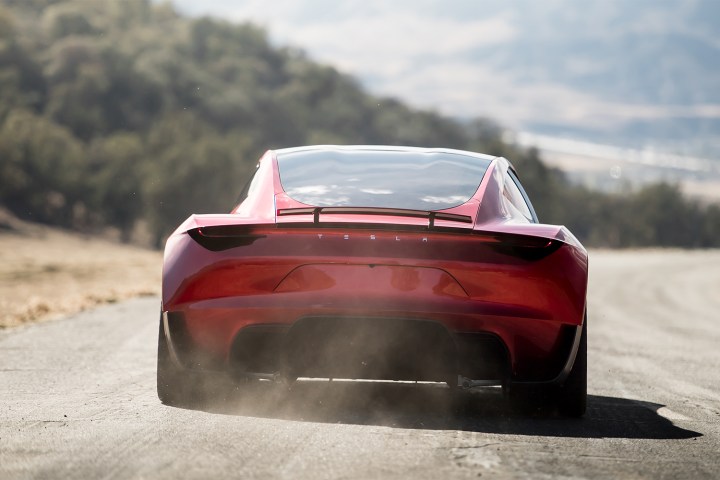Teslas are already known for being sleek and fast, but there’s an even sleeker and even faster model on the way as Tesla is reviving the beloved Tesla Roadster. The original Tesla Roadster was the company’s first car and was essentially a Tesla powertrain in the body of a Lotus Elise. But the new Roadster is its own thing — and it’s been designed from the ground up.
The new car was first announced as a concept all the way back in 2017, and was originally set to be available starting in 2020. That, obviously, didn’t happen, but we haven’t forgotten about what’s set to be the coolest Tesla yet.
Tesla Roadster design
The new Tesla Roadster is set to be the most stylish Tesla yet, at least based on the concepts we’ve seen so far. It’ll have an aerodynamic two-door coupe design and a low center of gravity, giving it a sporty and modern look. The car will come with four seats, allowing for more passengers than the original Roadster’s two-seater setup, however, we’re not expecting the rear two seats to be particularly roomy. The car will also have more aggressive styling than the previous model and 19-inch wheels.

The interior design of the 2023 Tesla Roadster will also get a number of tweaks compared to previous Teslas. It’ll feature an all-new dashboard and center console, as well as improved materials and comforts like heated seats and a panoramic roof. Unlike some previous Teslas, the Roadster will seemingly offer a display built into the center console, rather than a floating display. Like some of Tesla’s other cars, the Roadster may get a yoke instead of a traditional steering wheel, though that may also come as an option. Of course, all of this remains subject to change — and given the fact that it has now been six years since the Roadster was announced, with no actual release in sight, it would be shocking if some design aspects didn’t change.
Tesla Roadster performance
Performance-wise, the Tesla Roadster will be a beast. It’s set to have an impressive zero-to-60 time of 1.9 seconds from its three electric motors and a top speed of 250 mph, though that’ll likely be limited for safety reasons. The car will also have a range of 620 miles on a single charge, making it the longest-range electric vehicle in production, if it were to be released now.

The final piece of the puzzle is Autopilot, Tesla’s semiautonomous driving system. The company hasn’t officially announced whether or not it’ll be available on the Roadster, but it’s likely that it will be included in some form. On most Tesla models, basic Autopilot is included by default, essentially offering a version of an adaptive cruise control. Users then have to pay for more advanced self-driving systems, like Tesla’s so-called Full Self-Driving (which doesn’t really fully drive itself yet).
Tesla Roadster price and release date
While the Tesla Roadster was originally announced in 2017 with a planned release date of 2020, that window has come and gone. At some point, we were expecting a 2023 release, however that’s not going to happen either. At this point, it’s anyone’s guess as to when the Tesla Roadster finally launches to the public, especially considering the fact that Tesla seems more focused on Cybertruck production right now. Hopefully, Tesla makes good on the promise of the Roadster before announcing and launching more models.
Tesla says that the base price for the Roadster will be $200,000, with prices ranging up from there. There will also be a so-called Founder’s Edition, which will cost $250,000. We don’t yet know exactly what the difference between the two will be.
Of course, by the time the Roadster does eventually come out, other electric cars may have taken its place as the fastest or the one with the longest range as plenty of other companies have committed to releasing their own high-performance electric cars. But the Tesla Roadster will likely still be one of the most impressive EVs out there, and a great option for those who want speed and range without having to sacrifice style.



